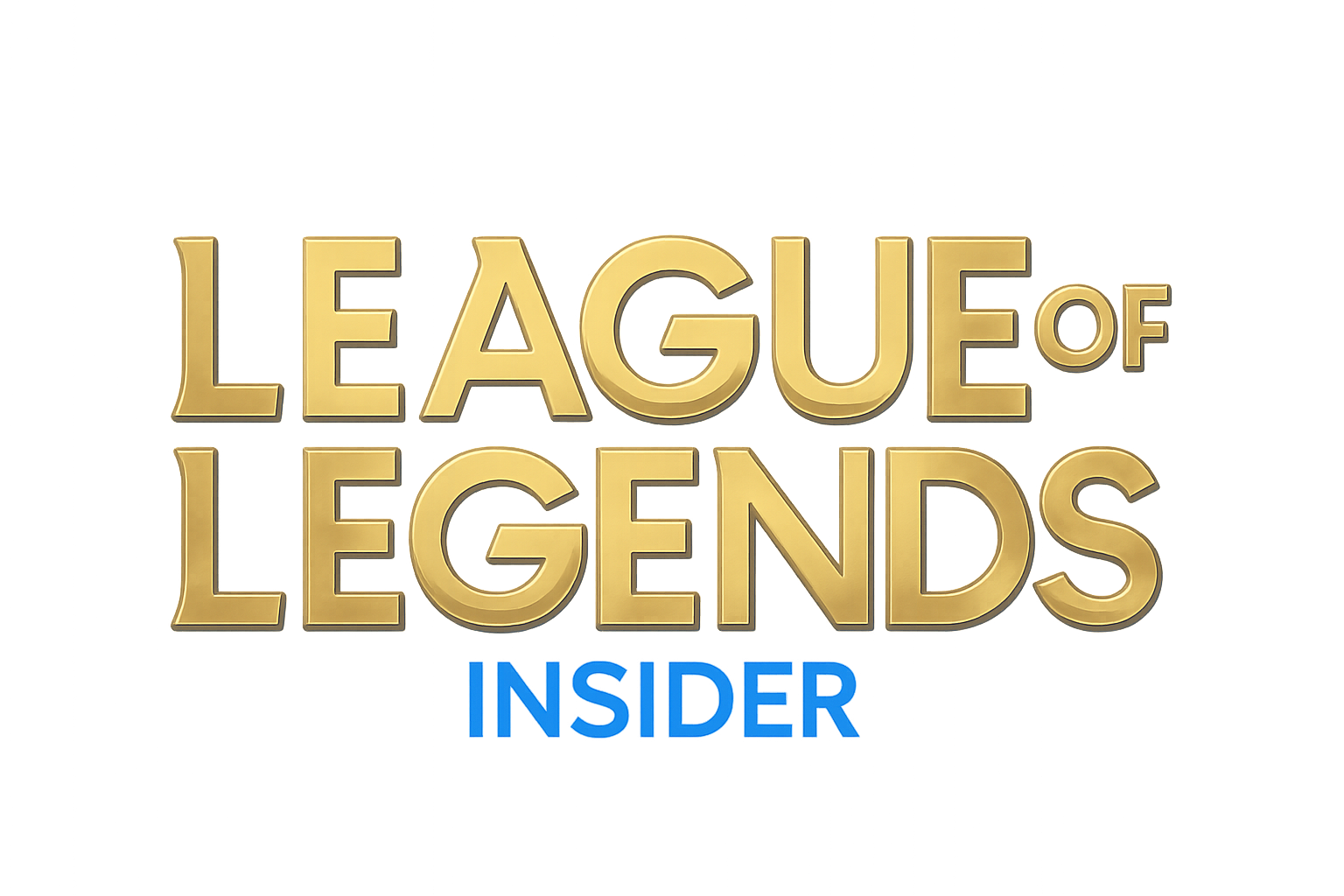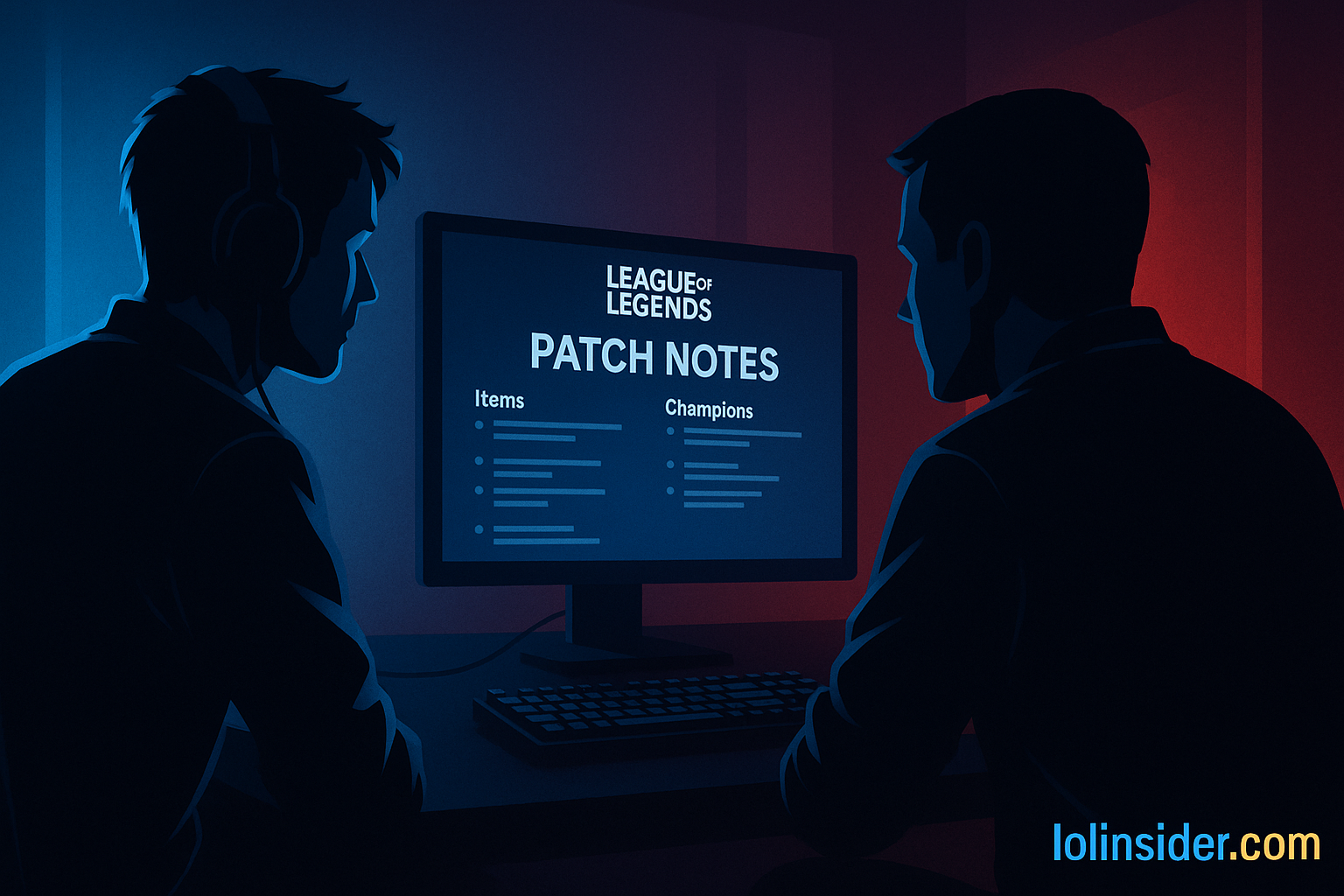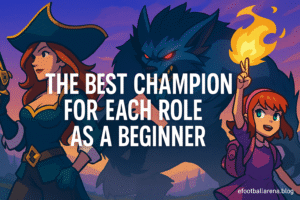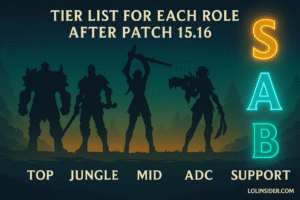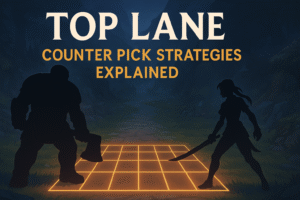Every two weeks, Riot shakes up the League of Legends landscape with a new patch — adjusting items, buffing champions, and sometimes flipping the entire meta on its head. For casual players, these changes might feel overwhelming, but for professional teams, adapting fast is everything.
Knowing how pro teams adapt to new patches can help you understand why certain champions suddenly dominate esports, why some teams fall apart overnight, and how you can apply the same learning process to climb faster in ranked.
In this deep dive, we’ll uncover exactly how pro players, analysts, and coaches handle new patches — step by step — from analysis and scrim preparation to in-game testing, meta reading, and strategic adjustment.
🧠 Step 1: Patch Analysis — The Data Phase
The moment Riot releases a patch preview or notes on Tuesday or Wednesday before the patch goes live, professional teams jump straight into analysis.
1. Coaches and Analysts Break Down the Notes
Most LCS, LEC, and LCK teams have analysts whose job is to read every line of the patch and translate it into competitive impact.
They ask:
- Which champions got buffed or nerfed significantly?
- Which roles were most affected?
- Do the item or system changes shift early-game tempo or scaling?
- Which regions or playstyles will benefit?
Example: When Riot reworked Stormsurge and Luden’s Companion in Patch 15.14, analysts quickly realized that burst mages like Syndra and Veigar would surge in power.
2. Comparing Numbers, Not Feelings
Pro teams rarely make decisions based on “this feels stronger.” They rely on data models, spreadsheets, and win-rate projections across thousands of solo queue games from KR, CN, and EUW servers.
They track things like:
- Win rate increase after patch (24-hour vs 72-hour trend)
- Average gold efficiency of new items
- Priority bans across top 1000 Challenger accounts
3. Predictive Meta Models
Top organizations (like T1, G2, and Gen.G) use internal prediction models. These tools simulate early pick–ban dynamics, suggesting which champions will rise or fall based on balance changes.
⚔️ Step 2: Testing in Solo Queue
After theory comes hands-on testing. Every pro player spends hours grinding solo queue to “feel” the patch changes directly.
Why Solo Queue Matters:
- It’s the fastest way to test new champions and item builds.
- It reveals how average players respond to changes — which helps predict ranked and scrim trends.
- It builds muscle memory for updated mechanics (e.g., mana costs, attack ranges, cooldowns).
Typical Solo Queue Routine:
- Each player focuses on 3–5 champions they believe could rise in priority.
- They test multiple item paths and rune setups.
- Analysts track the performance data from these games.
Example:
When Riot buffed Nidalee’s heal and base stats, LCK junglers like Oner and Canyon immediately spammed her in solo queue. Within 48 hours, Nidalee re-entered competitive drafts across both LCK and LPL.
🧩 Step 3: Internal Scrims and Controlled Experiments
After solo queue testing, teams begin scrim block experiments — organized 5v5 practice matches where they test specific patch hypotheses.
How Scrims Are Structured:
- Draft Focus: Teams test new bans/picks based on patch theory.
- Win Condition Testing: Try to identify what wins games now. Is it scaling? Early pressure? Objective fights?
- Controlled Variables: Teams repeat matchups under similar conditions to confirm results.
For instance:
- T1 might scrim against Gen.G multiple times using the same mid–jungle duo to test consistency.
- If the win condition repeats (like early skirmish success), that becomes part of the new meta plan.
Why Scrim Data Is Gold:
Unlike solo queue, scrims mimic pro-level communication, coordination, and draft strategy — the exact environment where patches truly matter.
Teams compare scrim results internally:
- Champion win rate across 10+ games
- Objective control success
- Damage share and survivability stats
📊 Step 4: Internal Meta Meetings
Every major team holds weekly meta meetings — usually led by the head coach, with analysts presenting data and players contributing feedback.
What Happens in These Meetings:
- Analysts summarize patch data and scrim findings.
- Players share personal experiences: what felt strong or weak.
- Coaches decide on priority champions for each role.
They often categorize champions into tiers:
| Tier | Definition | Example |
|---|---|---|
| S+ | First-pick/ban material | Azir, Zeri, Sejuani |
| A | Strong if drafted with synergy | Orianna, Rell, Aatrox |
| B | Niche or counter-pick | Cassiopeia, Kled, Vel’Koz |
This tier list evolves every few days, especially after patches that heavily shift items or jungle dynamics.
🔄 Step 5: Draft Adaptation and Pick–Ban Simulation
Once the patch is understood and tested, the next challenge is translating it into competitive drafts.
1. Draft Theory Practice
Pro coaches simulate drafts internally — predicting how opponents will ban or prioritize certain picks.
Teams run “mock drafts” to prepare multiple outcomes:
- What if the enemy bans our top two champs?
- What if we first-pick a flex pick like Akali or Gragas?
2. Flex Picks Gain Importance
In fresh patches, flexibility is king. Teams prioritize champions that can shift lanes, forcing enemies into suboptimal counterpicks.
Example:
- Renekton (Top/Mid flex)
- Orianna (Mid/Bot mage flex in LEC drafts)
- K’Sante (Tank/Bruiser hybrid adaptable to patch scaling changes)
3. Counter-Drafting Evolves Quickly
If one champion dominates early patch play, counter-strategies are built fast.
In the LPL, when Naafiri mid rose in priority, teams like JDG and LNG countered it within a week using Lissandra and Swain.
💬 Step 6: Cross-Region Scrim Insights
Top teams don’t just scrim domestically — they analyze international scrims to cross-verify patch interpretations.
LCK Teams:
Often focus on mechanical precision and optimal setups. They test patch stability — “does this comp work under perfect play?”
LEC & LCS Teams:
Experiment more aggressively. They often find creative drafts or off-meta builds earlier (e.g., G2’s “funnel” comps or mage bot lanes).
LPL Teams:
Prioritize tempo and aggression. They stress-test patches faster than any other region — often discovering broken combos first.
By observing how other regions adapt, teams like T1 or G2 refine their patch understanding before international events.
⚙️ Step 7: Adapting Practice Routines
Once a patch settles, teams change their training structure to match the new meta.
If Early Game is Stronger:
- Teams increase focus on 2v2 and 3v3 skirmishes.
- Junglers drill early pathing routes.
- Support/mid duos practice roaming coordination.
If Scaling is Stronger:
- Teams practice objective setups and macro patience.
- Late-game shotcalling becomes a training priority.
When Items Change:
- Coaches assign itemization experiments per player.
Example: Support tries 3 Mythic combinations in 10 scrims to find efficiency differences.
These micro-adjustments compound into major advantages once tournament play begins.
🧩 Step 8: On-Stage Adaptation — Real-Time Learning
Even after weeks of testing, the real meta is only revealed on stage. Under pressure, teams learn what truly works.
Key Indicators:
- Which first picks have 60%+ win rate after week 1?
- Which “OP” champions fail due to execution errors?
- How are drafts evolving mid-series (BO3 or BO5)?
Teams constantly tweak pick–ban priorities week to week.
Example: In LCK Spring 2024, Ahri was first-picked every match for 2 weeks — until teams learned to exploit her cooldown windows and replaced her with Orianna.
Pro adaptation never ends. Even mid-split, coaches adjust playstyles, compositions, and champion pools based on new discoveries.
🧠 Step 9: The Psychological Side of Adapting
Players aren’t robots. When patches dramatically shift the game, mental adaptation becomes just as important as mechanical skill.
Challenges:
- Losing confidence in main champions.
- Feeling overwhelmed by frequent changes.
- Over-tilting during scrim losses.
How Teams Handle It:
- Sports psychologists guide emotional resilience.
- Routine consistency helps players stabilize confidence.
- Team discussions keep everyone aligned — avoiding frustration when the patch “doesn’t feel right.”
The best pros know that mental flexibility is part of patch mastery.
🔮 Step 10: How This Affects Ranked Play
You can apply the same pro-level process to your solo queue grind. Here’s how to adapt efficiently after a new patch drops:
- Read Patch Notes Fully — don’t rely on YouTube summaries.
- Play a Few Normals First to feel the changes.
- Track Win Rates from pro and high-ELO players on OP.GG or Lolalytics.
- Limit Champion Pool — focus on 2–3 strong meta picks.
- Stay Calm — it’s normal to lose LP during adaptation.
If you learn how to read the patch and test logically like the pros, you’ll climb faster than players who just “wing it.”
🏆 Case Study: How T1 and G2 Master Patch Changes
T1 (LCK)
- Approach: Analytical and data-driven.
- Method: Analyst team reviews over 5000 games of KR solo queue data per patch.
- Result: Fast meta stability — rarely caught off-guard by shifts.
G2 Esports (LEC)
- Approach: Creative and chaotic.
- Method: Early experimentation with non-meta drafts (like Kled mid or Seraphine bot).
- Result: Early upset potential, especially in best-of-ones.
Their contrasting approaches show how regional culture affects adaptation — but both lead to success when executed properly.
⚖️ Final Verdict: Adaptation Is the Real Skill
Every pro team has stars, but only the ones who adapt fastest to new patches stay dominant. Mechanics win fights — but adaptation wins seasons.
To summarize:
- Analysts identify trends.
- Players test hypotheses.
- Coaches build structure.
- Teams refine through scrims.
- Champions emerge through data and trust.
It’s not luck that certain teams always rise to the top after a patch — it’s systemized learning, precision, and teamwork.
If you want to improve like a pro, learn from their process: don’t fear change, master it.
